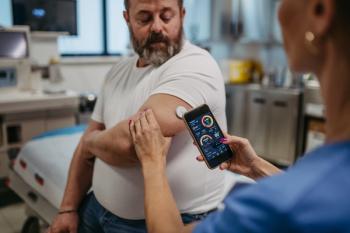
- Pharmacy Careers Fall 2019
- Volume 13
- Issue 2
Pharmacist Training in Suicide Awareness Can Save Lives
Suicide rates in the United States increased in nearly every state between 1999 and 2016. More than half of the states had a more than 30% rise in suicides during that period. In 2016, nearly 45,000 lives were lost to suicide.
Suicide rates in the United States increased in nearly every state between 1999 and 2016. More than half of the states had a more than 30% rise in suicides during that period.
In 2016, nearly 45,000 lives were lost to suicide.
The role of pharmacists is evolving and expanding to include a variety of patient care services that increasingly include suicide prevention.
A program at Washington State University (WSU) College of Pharmacy and Pharmaceutical Sciences trains student pharmacists to recognize patients in need of suicide intervention.
In a session at the 2019 American Association of Colleges of Pharmacies (AACP) Annual Meeting in Chicago, Illinois, Christina Buchman, PharmD, BCACP, and Megan Willson, PharmD, BCPS, both with WSU’s College of Pharmacy and Pharmaceutical Sciences, discussed the impact of suicide on student pharmacists and the need for suicide awareness training. They noted that mental illness and suicide are nondiscriminatory and affect all individuals, including student pharmacists.
Suicide is the second-leading cause of death in individuals aged 15 to 34 years, and it claims the life of 1 person every 12 minutes, according to the presenters.
In 2016, Washington became the first state to require pharmacists to complete suicide awareness and prevention training to address this public health issue.
The WSU program, taught in the first semester of the pharmacy curriculum, assesses students’ knowledge at the beginning of the course and near the end to evaluate progress. In between, students see videos demonstrating signs that a person needs help and how best to approach the situation.
In classrooms, live interactions and role-playing exercises reinforce the material.
Students also practice saying the word suicide, Willson said.
WSU counseling staff members are on hand and ready to walk students to a health care facility, as needed, she added.
A pharmacist asking a patient if they are considering suicide should remove dangers and take the next steps, regardless.
September marked Suicide Awareness Month. The WSU program is a good example of how pharmacists can have an impact by just starting the conversation. Suicide awareness and prevention could become second nature to students, who can provide this life-saving service throughout their careers.
Articles in this issue
about 6 years ago
Pharmacy School Strategic Alliance Partnership Programabout 6 years ago
University of Illinois at Chicago College of Pharmacyabout 6 years ago
Chapman University School of Pharmacyabout 6 years ago
What's Coming to ASHP Midyear 2019about 6 years ago
Finding Your Passion in a Nontraditional Pharmacy Career Pathabout 6 years ago
My Burnout Storyabout 6 years ago
How Pharmacy Graduates Can Overcome UnemploymentNewsletter
Stay informed on drug updates, treatment guidelines, and pharmacy practice trends—subscribe to Pharmacy Times for weekly clinical insights.


















































































































































































































